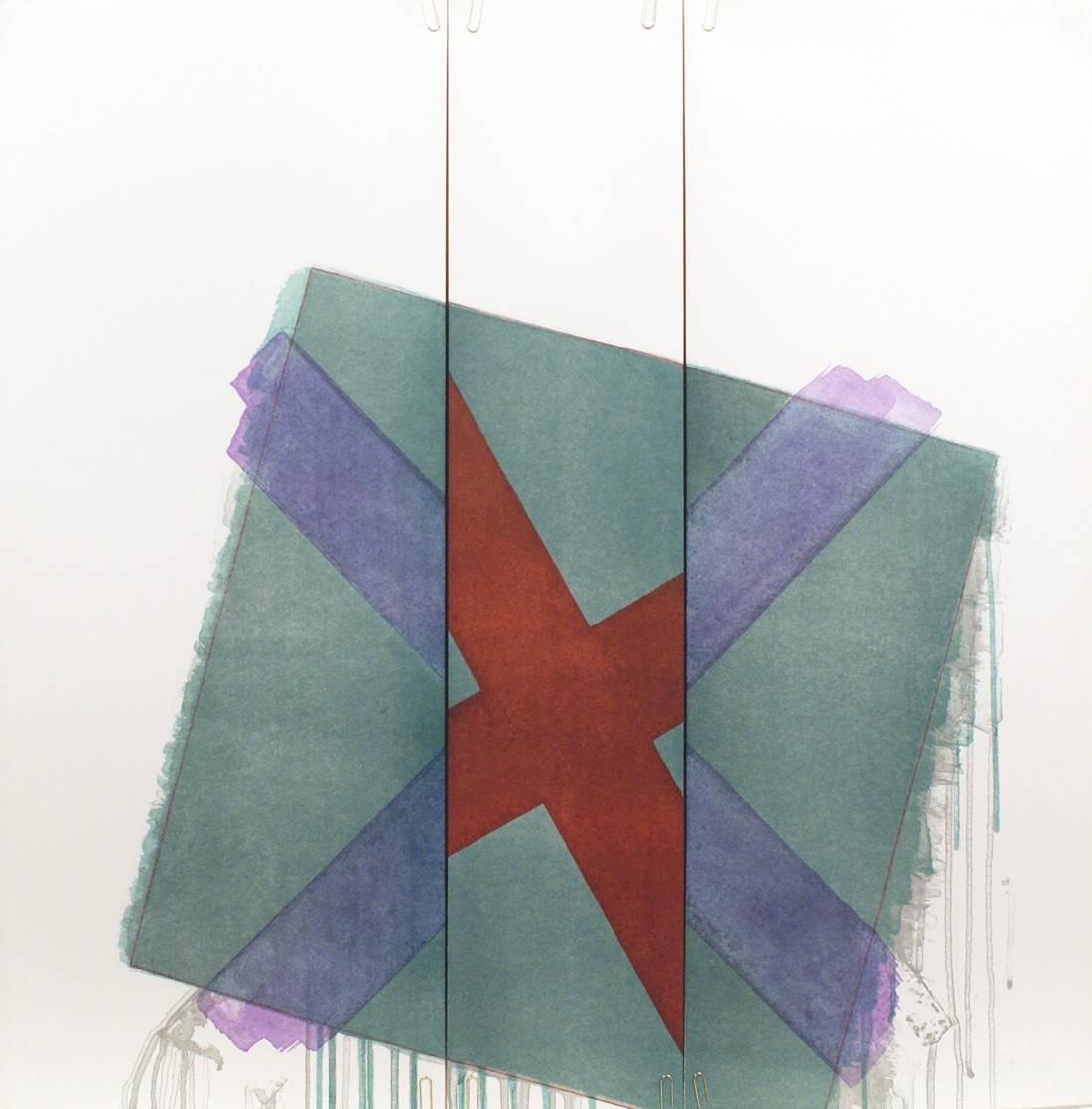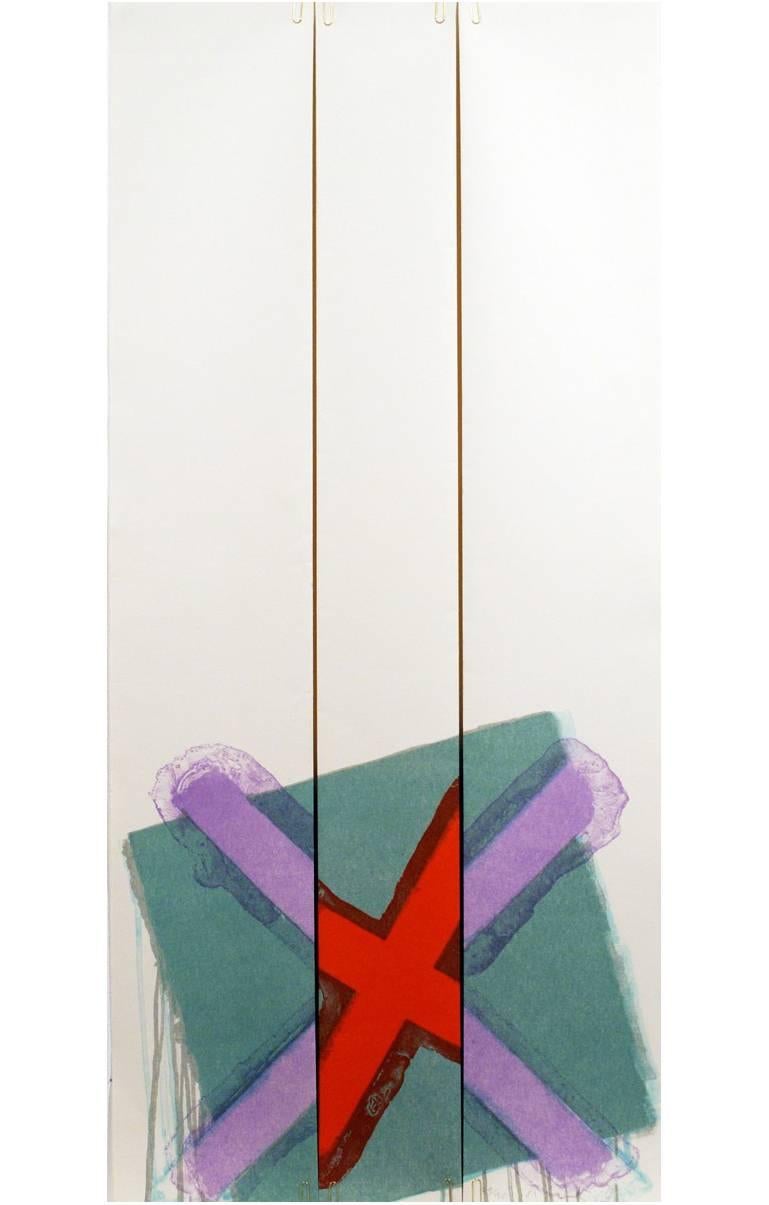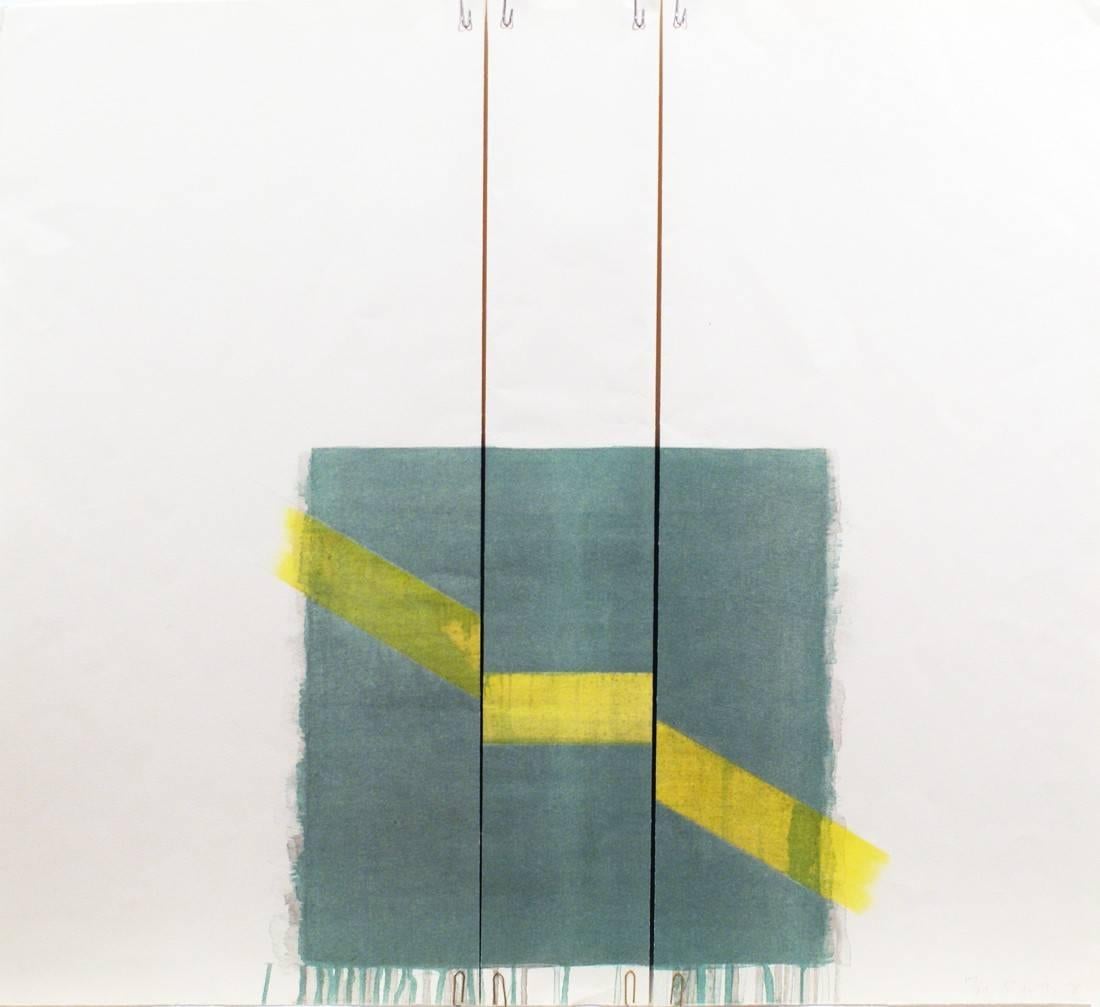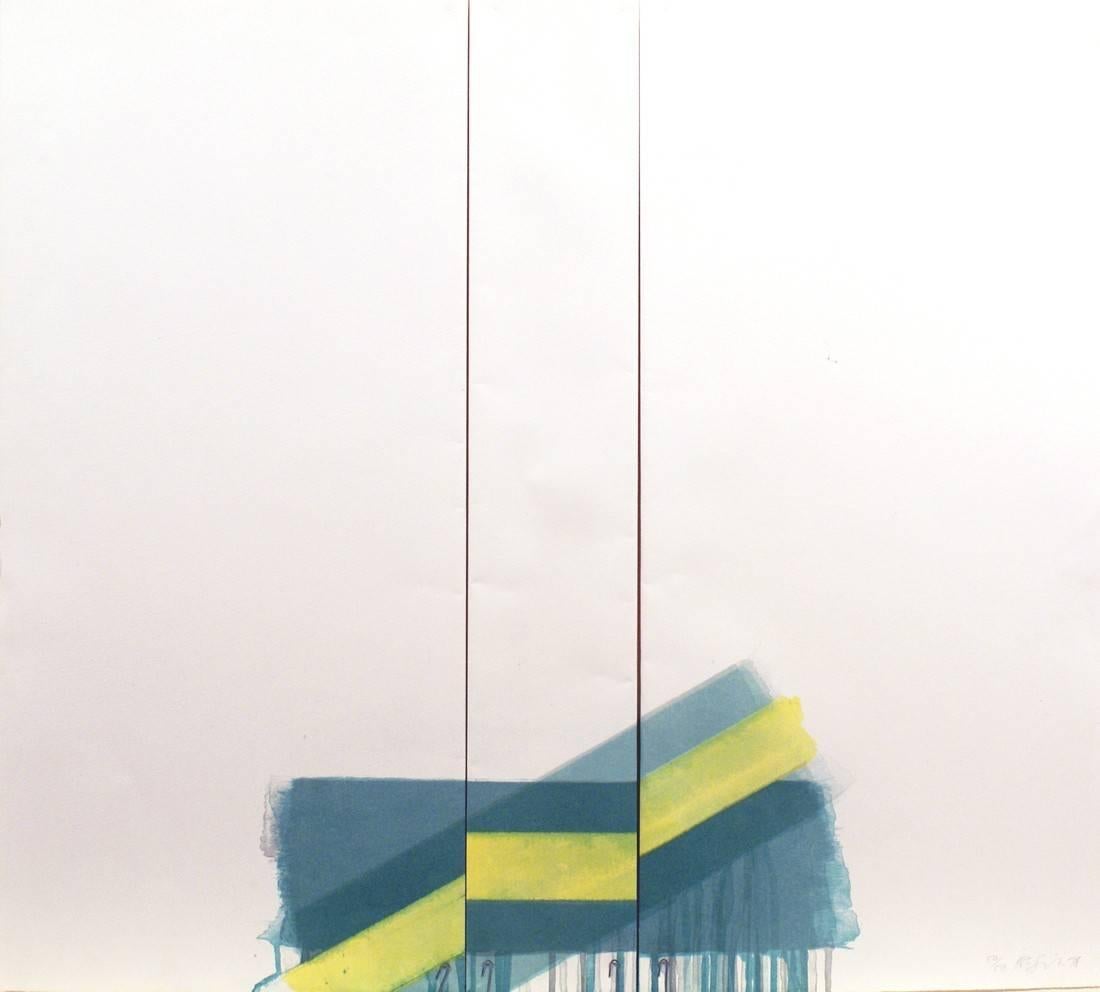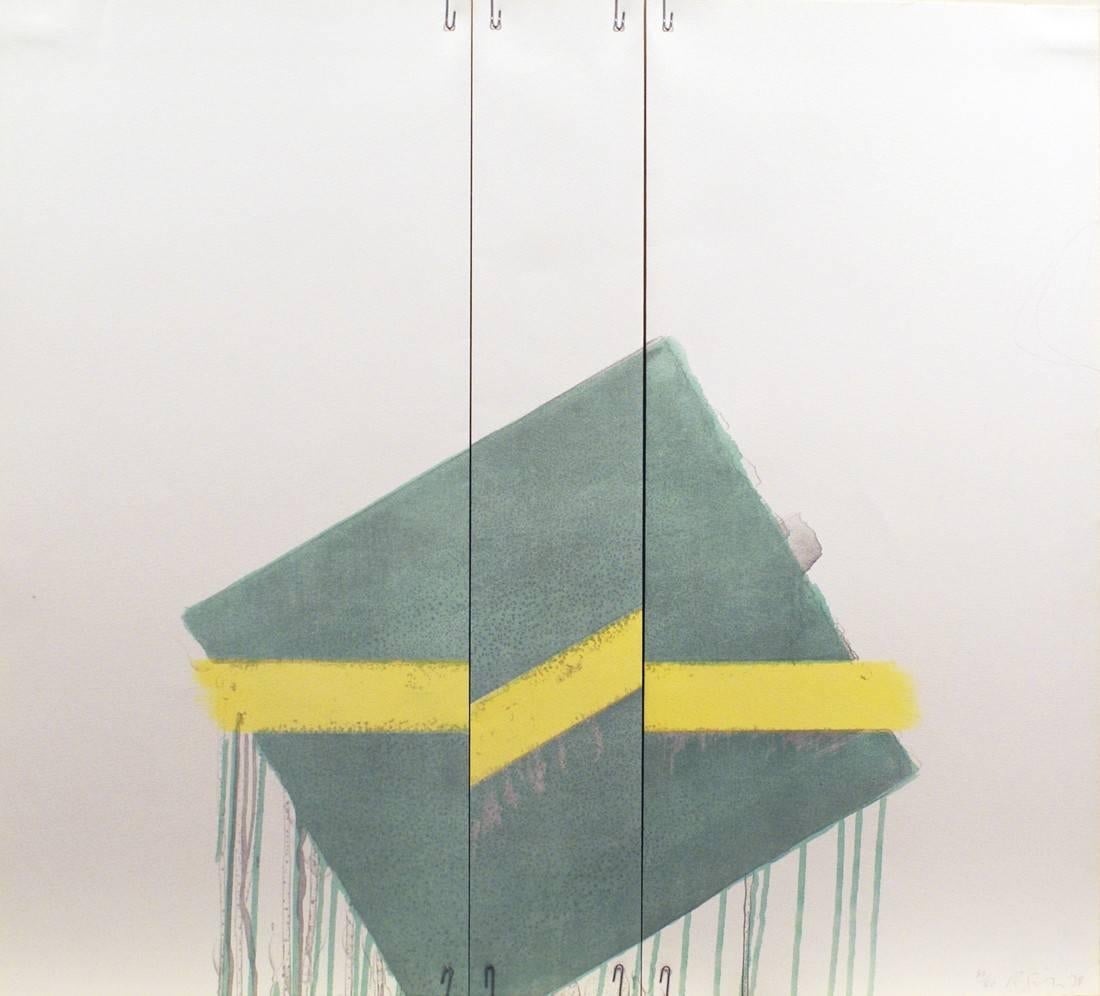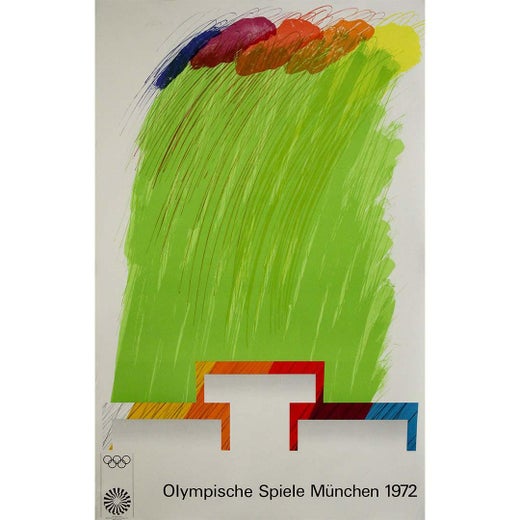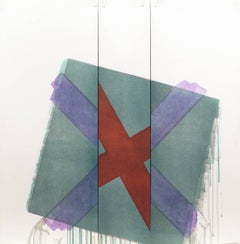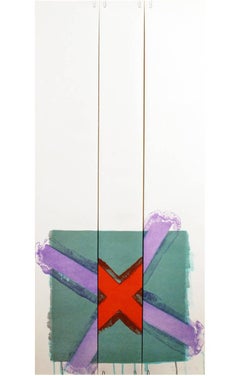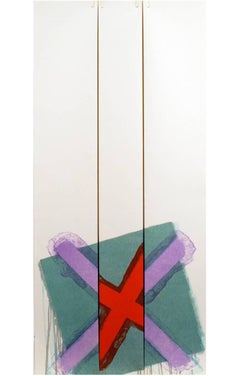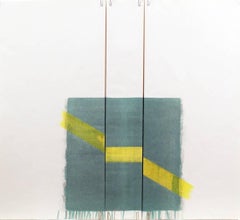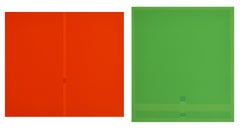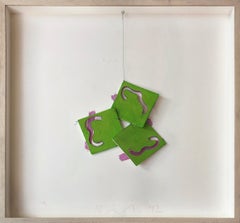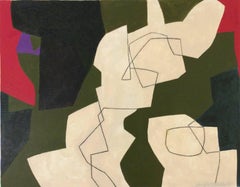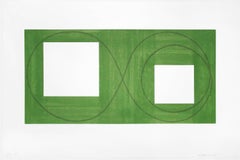Items Similar to Two of a Kind VIa (dark red x on green)
Want more images or videos?
Request additional images or videos from the seller
1 of 5
Richard SmithTwo of a Kind VIa (dark red x on green)1978
1978
$1,207.38
£900
€1,044.35
CA$1,693.72
A$1,850.53
CHF 973.27
MX$22,248.07
NOK 12,254.30
SEK 11,505.16
DKK 7,798.38
About the Item
70 x 70 cms (27 1/2 x 27 ins)
Edition of 70
- Creator:Richard Smith (1931 - 2016, English)
- Creation Year:1978
- Dimensions:Height: 27.5 in (69.85 cm)Width: 27 in (68.58 cm)
- More Editions & Sizes:70 x 70 cms (27 1/2 x 27 ins) Edition of 70Price: $805
- Medium:
- Movement & Style:
- Period:
- Condition:
- Gallery Location:London, GB
- Reference Number:Seller: RSE015b1stDibs: LU26221070303
Richard Smith
Charles Richard "Dick" Smith was an English printmaker and painter. He Attended St Albans School of Art followed by post-graduate studies at the Royal College of Art, London, from 1954-57. Smith shared a flat-cum-studio with Peter Blake in his second year at the RCA, and then again for two years after he left the college in 1957. When Terence Conran's Soup Kitchen opened on Fleet Street in the late 1950s, it featured a letter-collage mural by Smith and Blake. Michael Chow would later commission Smith to design installations for his restaurant in Los Angeles, and Chow and Conran have remained two of his biggest supporters. In 1959 he moved to New York to teach on a Harkness Fellowship, staying for two years, where he produced paintings combining the formal qualities of many of the American abstract painters which made references to American commercial culture. The artist's first solo exhibition was at the Green Gallery. As his work matured it tended to be more minimal, often painted using one colour with a second only as an accent. In trying to find ways of transposing ideas, Smith began to question the two-dimensional properties of art itself and to find ways by which a painting could express the shape of reality as he saw it. These principles he carried into his graphic work by introducing cut, folded and stapled elements into his prints; some works were multi-leaved screenprinting, and others printed onto three-dimensional fabricated metal. Smith returned to England in 1963 - specifically East Tytherton, Wiltshire where Howard Hodgkin was a neighbour - and gained critical acclaim for extending the boundaries of painting into three dimensions, creating sculptural shaped canvases with monumental presence, which literally protruded into the space of the gallery. Evocative titles such as Panatella and Revlon, and cosmetic, synthetic colours alluded to the consumer landscapes of urban America which had proved so influential. He showed at the Kasmin Gallery, a venture between Kas and the Marquess of Dufferin and Ava in New Bond Street, throughout the 60s, more-widely known as David Hockney's first gallery. Smith was invited to exhibit at the XXXV Venice Biennale as the official British artist in 1970. Smith taught with Richard Hamilton at Gateshead in 1965, where he met Mark Lancaster and Stephen Buckley, and again in 2000, becoming close to the artist and his wife, Terry. By the late 1960s Smith's ambition to produce paintings which shared a common sensibility with other media, such as film and photography, began to wane and he focused on the formal qualities of painting. First exhibited in New York in 1971, the traditional wooden supports of the canvases were replaced by aluminium rods and strings, allowing them to be hung freely in response to the surrounding architecture. Smith continued in the subsequent decades to construct site-specific works in public and private spaces often hanging from the ceilings or architectural supports. He resettled in Patchogue, New York in around 1977. Smith was awarded the CBE in 1971.
About the Seller
4.8
Recognized Seller
These prestigious sellers are industry leaders and represent the highest echelon for item quality and design.
Established in 1960
1stDibs seller since 2015
118 sales on 1stDibs
Typical response time: 12 hours
Associations
International Fine Print Dealers AssociationSociety Of London Art Dealers
- ShippingRetrieving quote...Shipping from: London, United Kingdom
- Return Policy
Authenticity Guarantee
In the unlikely event there’s an issue with an item’s authenticity, contact us within 1 year for a full refund. DetailsMoney-Back Guarantee
If your item is not as described, is damaged in transit, or does not arrive, contact us within 7 days for a full refund. Details24-Hour Cancellation
You have a 24-hour grace period in which to reconsider your purchase, with no questions asked.Vetted Professional Sellers
Our world-class sellers must adhere to strict standards for service and quality, maintaining the integrity of our listings.Price-Match Guarantee
If you find that a seller listed the same item for a lower price elsewhere, we’ll match it.Trusted Global Delivery
Our best-in-class carrier network provides specialized shipping options worldwide, including custom delivery.More From This Seller
View AllTwo of a Kind VIb (dark red x on green)
By Richard Smith
Located in London, GB
70 x 72 cms (27 1/2 x 28 1/2 ins)
Edition of 70
Category
1970s Abstract Abstract Prints
Materials
Color, Lithograph
Two of a Kind IIIa (bright red x on green)
By Richard Smith
Located in London, GB
100.7 x 46.3 cms (40 x 18 1/4 ins)
Edition of 90
Category
1970s Abstract Abstract Prints
Materials
Color, Lithograph
Two of a Kind IIIb (bright red x on green)
By Richard Smith
Located in London, GB
100.7 x 46.3 cms (40 x 18 1/4 ins)
Edition of 90
Category
1970s Abstract Abstract Prints
Materials
Color, Lithograph
Two of a Kind IIa
By Richard Smith
Located in London, GB
71 x 71 cms (28 x 28 ins)
Edition of 80
Category
1970s Abstract Abstract Prints
Materials
Color, Lithograph
Two of a Kind Ib (yellow line on green)
By Richard Smith
Located in London, GB
70 x 76.2 cms (27 1/2 x 30 ins)
Edition of 50
Category
1970s Abstract Abstract Prints
Materials
Color, Lithograph
Two of a Kind IIb (yellow line on green)
By Richard Smith
Located in London, GB
70.5 x 77.5 cms (27 3/4 x 30 1/2 ins)
Edition of 80
Category
1970s Abstract Abstract Prints
Materials
Color, Lithograph
You May Also Like
Red-Green Rosso-Verde - Italian Art Minimalism Abstract PVC
By Antonio Calderara
Located in London, GB
This original screenprint diptych in colours are each hand signed in pencil by the artist with his monogram "A. C." at the lower left margins. Each are dated “1973” next to the sign...
Category
1970s Abstract Abstract Prints
Materials
PVC, Screen
Untitled (lavender green)
By Richard Smith
Located in New York, NY
Richard Smith
Untitled (lavender green), 1992
Acrylic and pastel on paper and foam core
22 1/2 x 22 1/2 inches (sheet)
23 x 23 inches (frame)
Signed and...
Category
1990s Modern Mixed Media
Materials
Paper, Pastel, Acrylic, Foam Board
Abstract Red & Green (Contemporary Minimal Abstract Painting on Paper)
By Ralph Stout
Located in Hudson, NY
Abstract painting on paper
image: 18 x 24 inches
paper size: 22 x 30 inches
Contemporary minimalist abstract painting on a beautiful thick, creamy white Arches paper, unframed.
Ins...
Category
2010s Abstract Abstract Paintings
Materials
Acrylic, Archival Paper
$1,200 Sale Price
45% Off
Two Open Squares Within a Green Area
By Robert Mangold
Located in New York, NY
Associated with the Minimalist art movement of the 1960s, Mangold developed a reductive vocabulary based on geometric forms, monochromatic color, and an emphasis on the flatness of t...
Category
2010s Minimalist Abstract Prints
Materials
Etching
Drawing (Green with Three Tongues) Pastel on Cutout Paper by Richard Smith, 1970
By Richard Smith
Located in Kingsclere, GB
Drawing (Green with Three Tongues), Pastel on CutOut Paper by Richard Smith, 1970
Additional information:
Medium: Pastel on Cut-out Paper with Staples
99 x 143 cm
39 x 56 1/4 in
Signed and dated
Smith was a key figure in the British development of Pop Art. By 1970 when this work was executed, Smith was primarily concerned with the examination of the two-dimensional nature of painting and was experimenting in both his oils and his works on paper with extending the paint surface out into a three-dimensional space. In this work we see the added extensions in collage (the ‘three tongues’) to the normal rectangular format. The large scale is testament to the influence of advertising in Smith's late 60s and early 70s works. This work was made in the same year that Richard Smith represented Great Britain at the XXXV Venice Biennale, with a solo show in the British Pavilion. Smith was chosen by a committee of art experts, who were Director of Tate Norman Reid, art historian Alan Bowness, art collector David Thompson, the British Council’s Lilian Somerville and art historian Norbert Lynton. It was a hugely defining period in Smith's career, including the creation of his sculpture-cum-paintings 'Waterfall', 'Triangular' (both in the collection of Tate, London) and Sphinx Series (British Council), before he began developments towards his Kite Series in 1971.
Charles Richard "Dick" Smith was an English printmaker and painter.
Smith was born in Letchworth, Hertfordshire, to Doris (née Chandler), a nurse and daughter of a chemical company director. He studied at Hitchin Grammar School and Luton School of Art. After military service with the Royal Air Force in Hong Kong, he attended St Albans School of Art followed by post-graduate studies at the Royal College of Art, London, from 1954-57. Smith shared a flat-cum-studio with Peter Blake in his second year at the RCA, and then again for two years after he left the college in 1957. When Terence Conran's Soup Kitchen opened on Fleet Street in the late 1950s, it featured a letter-collage mural by Smith and Blake. Michael Chow would later commission Smith to design installations for his restaurant in Los Angeles, and Chow and Conran have remained two of his biggest supporters.
In 1959 he moved to New York to teach on a Harkness Fellowship, staying for two years, where he produced paintings combining the formal qualities of many of the American abstract painters which made references to American commercial culture. The artist's first solo exhibition was at the Green Gallery. As his work matured it tended to be more minimal, often painted using one colour with a second only as an accent.
In trying to find ways of transposing ideas, Smith began to question the two-dimensional properties of art itself and to find ways by which a painting could express the shape of reality as he saw it. He began to take the canvas off the stretcher, letting it hang loose, or tied with knots, to suggest sails or kites - objects which could change with new directions rather than being held rigid against a wall, and taking painting close to the realm of sculpture. These principles he carried into his graphic work by introducing cut, folded and stapled elements into his prints; some works were multi-leaved screenprinting, and others printed onto three-dimensional fabricated metal.
Smith returned to England in 1963 - specifically East Tytherton, Wiltshire where Howard Hodgkin was a neighbour - and gained critical acclaim for extending the boundaries of painting into three dimensions, creating sculptural shaped canvases with monumental presence, which literally protruded into the space of the gallery. Evocative titles such as Panatella and Revlon, and cosmetic, synthetic colours alluded to the consumer landscapes of urban America which had proved so influential. He showed at the Kasmin Gallery, a venture between Kas and the Marquess of Dufferin and Ava in New Bond Street, throughout the 60s, more-widely known as David Hockney's first gallery.
After being awarded the Grand Prize at the 9th São Paulo Biennial in 1967 and important exhibitions at Kasmin in 1963, Tate in 1964, and Richard Feigen Gallery in 1966, Smith was invited to exhibit at the XXXV Venice Biennale as the official British artist in 1970. Smith was chosen by a committee of art experts, who were Director of Tate Norman Reid, art historian Alan Bowness, art collector David Thompson, the British Council’s Lilian Somerville and art historian Norbert Lynton. Smith taught with Richard Hamilton at Gateshead in 1965, where he met Mark Lancaster and Stephen Buckley, and again in 2000, becoming close to the artist and his wife, Terry.
By the late 1960s Smith's ambition to produce paintings which shared a common sensibility with other media, such as film and photography, began to wane and he focused on the formal qualities of painting. The freestanding installation Gazebo exhibited at the Architectural League of New York in 1966, and a tent project at the Aspen Design...
Category
20th Century Abstract Paintings
Materials
Pastel
Green Giant, Gene Davis
By Gene Davis
Located in Fairfield, CT
Artist: Gene Davis (1920-1985)
Title: Giant Green
Year: 1980
Medium: Silkscreen on Arches paper
Edition: 43/250, plus proofs
Size: 29.75 x 32.5 inches
Condition: Good
Inscription: Si...
Category
1980s Abstract Geometric Abstract Prints
Materials
Screen
$2,800 Sale Price
20% Off
More Ways To Browse
Roger Brown Prints
The Son Of Man Rene Magritte
Vintage Nagel Prints
Vintage Spray Cans
Calder Wire Sculpture
Damien Hirst Spots
Ezra Pound
Jim Dine Signed Prints
Louis Breton
Miro Orange
Picasso Woodcut
Robert Motherwell Untitled
Robert Rauschenberg Signed
Alfred Manessier Lithograph
Charles Biederman
Jasper Johns Signed
Kandinsky Original
Karl Alexander
